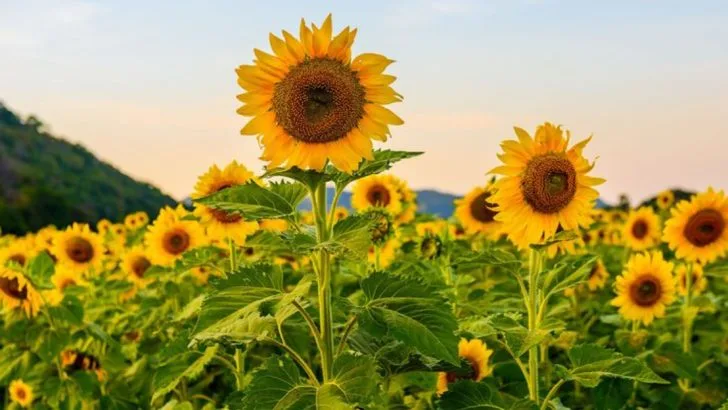Growing flowers from seed is a rewarding and budget-friendly way to fill your garden with color, but patience is key—some blooms appear in just a few weeks, while others take months. Knowing how long each flower takes to bloom can help you plan a garden that stays vibrant all season long.
In this article, we compare 18 popular garden flowers by their seed-to-bloom timeline. From quick-growing zinnias and marigolds to slower-blooming perennials like echinacea and delphiniums, this guide will help you choose the best flowers for your gardening goals and timeline. Whether you’re looking for fast results or long-term beauty, you’ll find the perfect blooms for your space!
Sunflower
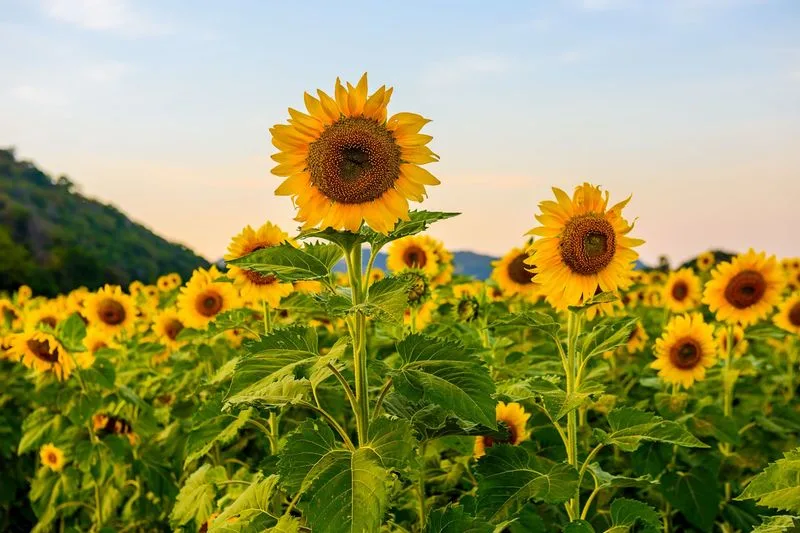
Sunflowers evoke feelings of warmth and happiness, and watching them grow is equally rewarding. From planting, it typically takes around 70 to 100 days for these bright blooms to make their grand appearance. During their growth, sunflowers follow the sun, a behavior known as heliotropism, which is fascinating to observe. Gardeners often choose them for their striking height and cheerful disposition, making them a favorite in sunny gardens. They thrive best in full sunlight and with well-drained soil, ensuring robust growth.
Marigold
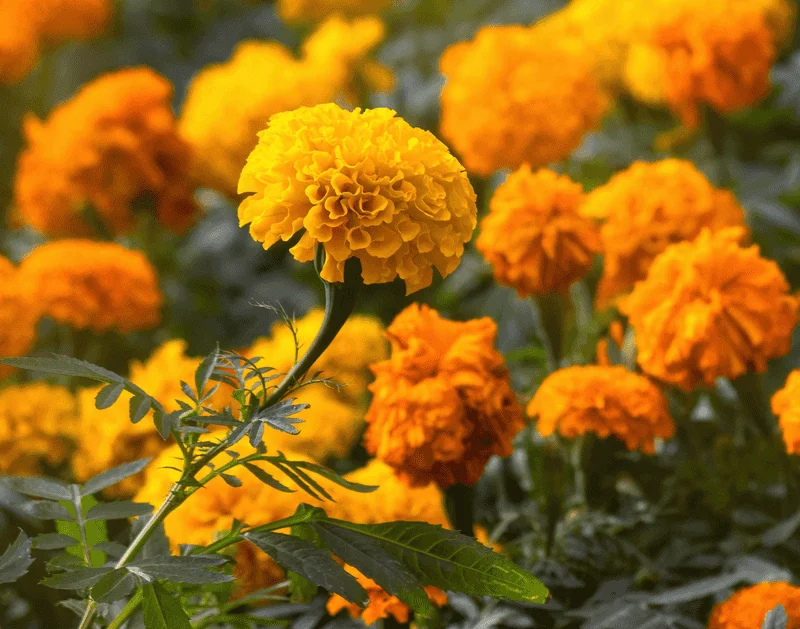
Marigolds are the epitome of easy-to-grow flowers, often brightening gardens with their vivid colors. These flowers typically bloom within 45 to 60 days from seeding. Known for their pest-repelling properties, marigolds are a savvy choice for companion planting. They flourish in sunny positions and require minimal care, making them ideal for novice gardeners. Their bold colors and unique fragrance make them a garden staple. With a little sunlight and regular watering, marigolds will bring vibrancy to any outdoor space.
Zinnia
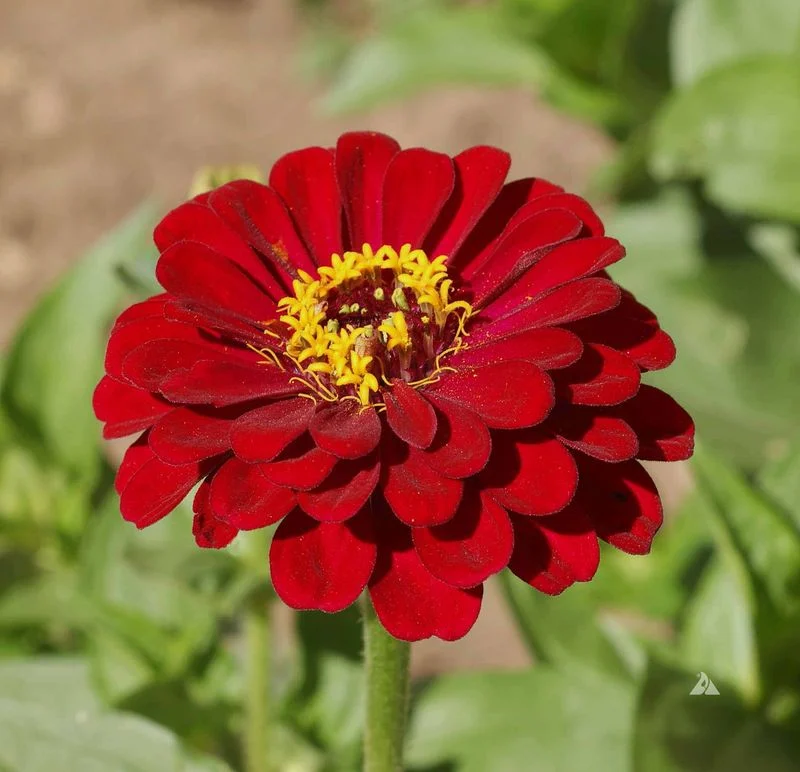
Zinnias are celebrated for their vibrant colors and ability to attract butterflies. Typically, they take about 60 to 70 days from seed to showcase their first blooms. These flowers are perfect for adding a splash of color to borders or as cut flowers in vases. They thrive in sunny spots and are surprisingly drought-tolerant, a plus for low-maintenance gardening. Regular deadheading can prolong their blooming period, rewarding gardeners with continuous color through the season.
Cosmos

Cosmos are delicate-looking flowers that bring elegance to any garden. They typically bloom 70 to 90 days after seeding. Known for their feathery foliage and daisy-like flowers, cosmos can add a touch of grace to borders. They are versatile and can thrive in poor soil, which makes them a favorite for challenging spots. Encourage more blooms by deadheading, and enjoy a prolonged flowering period. Their gentle sway in the wind makes for a mesmerizing garden display.
Petunia
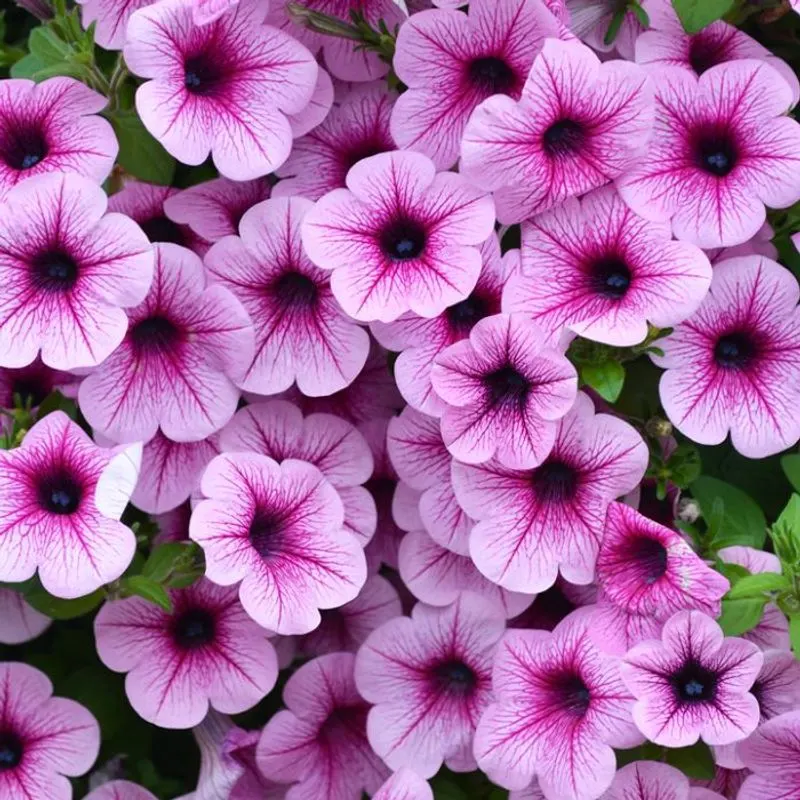
Petunias are a staple in hanging baskets and containers, offering prolific blooms in a range of colors. They usually take about 60 to 80 days to flower from seed. These flowers thrive in sunny conditions and benefit from regular deadheading to maintain their vibrant appearance. Petunias are known for their ability to cascade, making them perfect for elevated planters. They can create a lush display with minimal effort, ideal for those looking to add instant color to their outdoor spaces.
Snapdragon
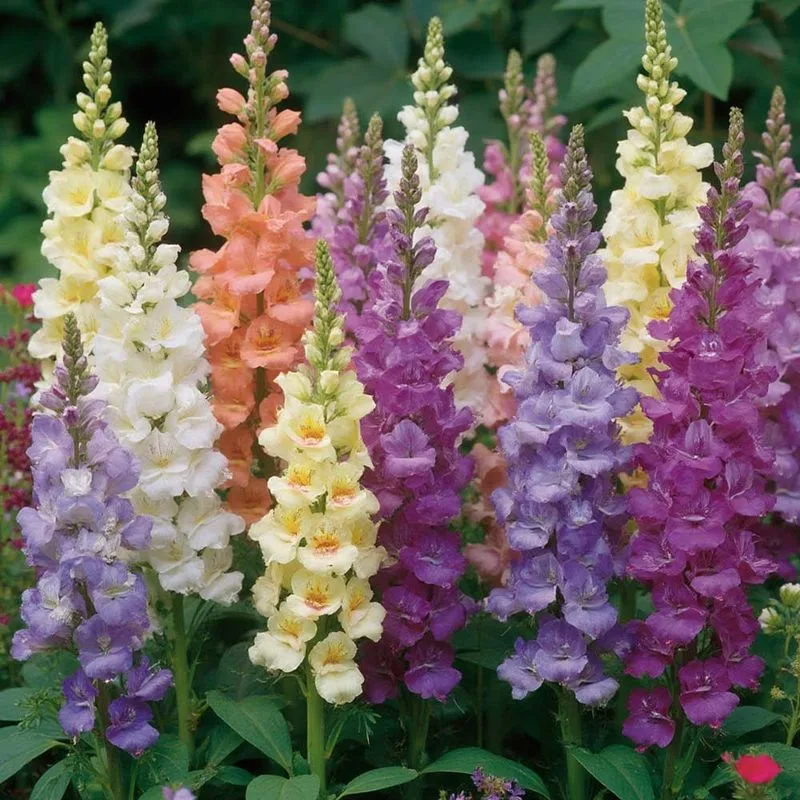
Snapdragons add a touch of whimsy with their dragon-shaped blooms, typically appearing 80 to 120 days after planting. These flowers are a fun choice for children, who delight in pinching the blossoms to see them ‘snap’. Ideal for cooler climates, snapdragons prefer full sun and well-drained soil. Their vertical growth habit makes them a striking addition to flower beds, providing height and color. Regular deadheading encourages prolonged blooming, bringing joy throughout the growing season.
Pansy

Pansies are cherished for their cheerful faces and rich hues, blooming as early as 70 to 90 days from seed. These hardy flowers thrive in cooler temperatures, making them a popular choice for early spring or fall gardens. Pansies perform best in partial sun with moist, well-drained soil. Their compact size makes them ideal for borders, containers, or as an underplanting beneath taller flowers. With a little care, pansies can offer a burst of color during transitional seasons.
Morning Glory
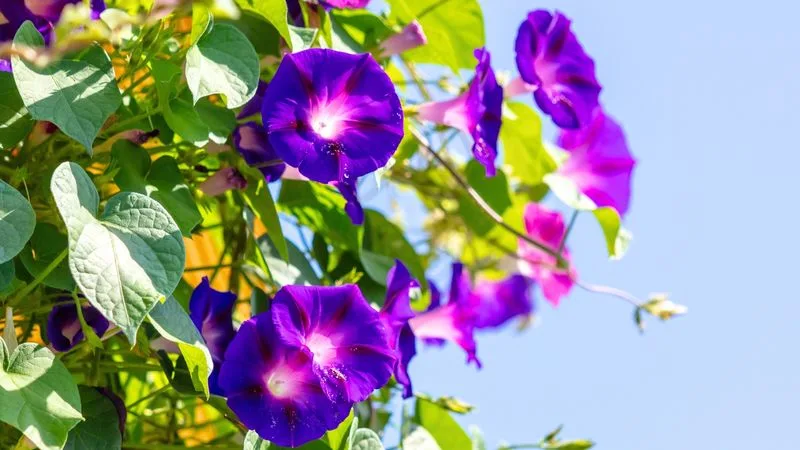
Morning glories are known for their vibrant, trumpet-shaped flowers that open in the morning sun. Blooming usually occurs 65 to 85 days after planting. These climbers can quickly cover trellises and fences, adding vertical interest to gardens. Morning glories prefer full sun and can tolerate poor soil, making them easy to grow. Their rapid growth and stunning flowers make them a popular choice for gardeners seeking fast results. Witnessing their daily blooming cycle can be a delightful experience.
Lupine
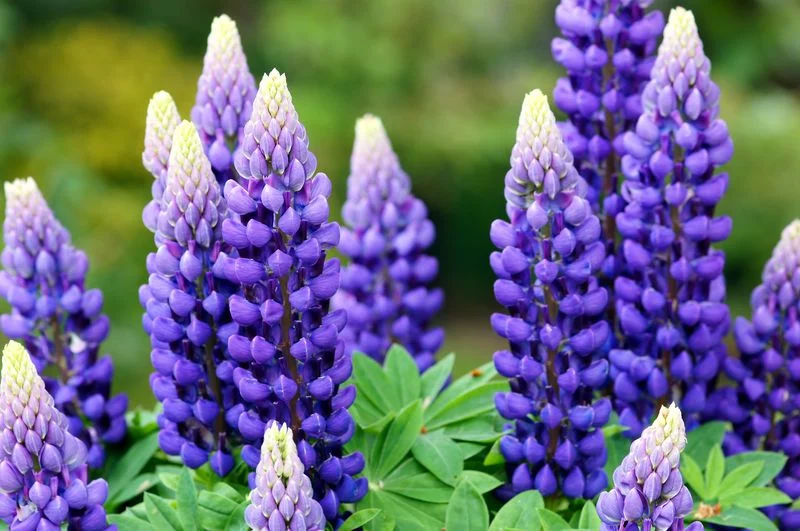
Lupines bring a vertical element to gardens with their tall, spire-like flowers, appearing about 75 to 90 days from seed. These striking blooms are perfect for adding height and structure to borders. Lupines thrive in cooler climates with full sun and well-drained soil. They can fix nitrogen in the soil, benefiting surrounding plants. Their vibrant colors attract pollinators, enhancing your garden’s ecosystem. With minimal care, lupines will reward you with a stunning floral display year after year.
Daisy
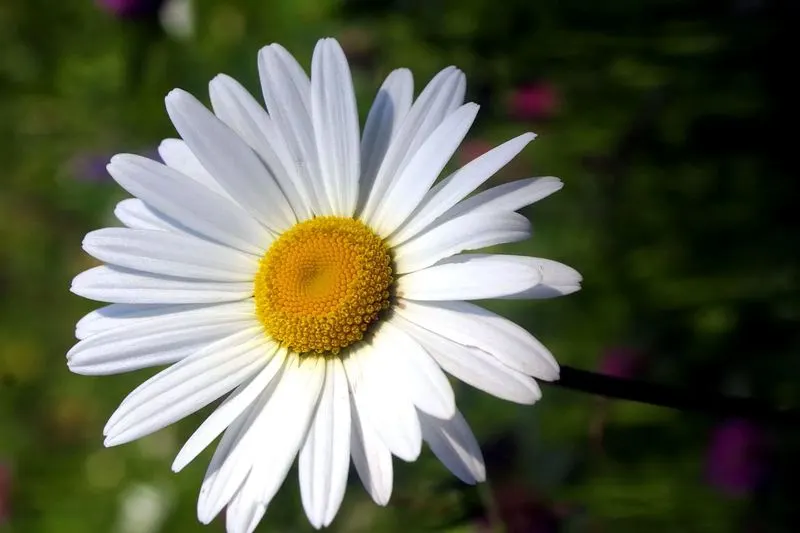
Daisies, with their classic white petals and sunny centers, typically bloom 70 to 120 days after seeding. Known for symbolizing purity and innocence, these flowers add a timeless charm to any garden. Daisies thrive in full sun and well-drained soil, making them an easy addition for gardeners seeking simplicity. They work well in wildflower meadows or as part of a cottage garden. Regular pruning encourages new growth, ensuring a fresh display of blooms throughout their growing season.
Sweet Pea
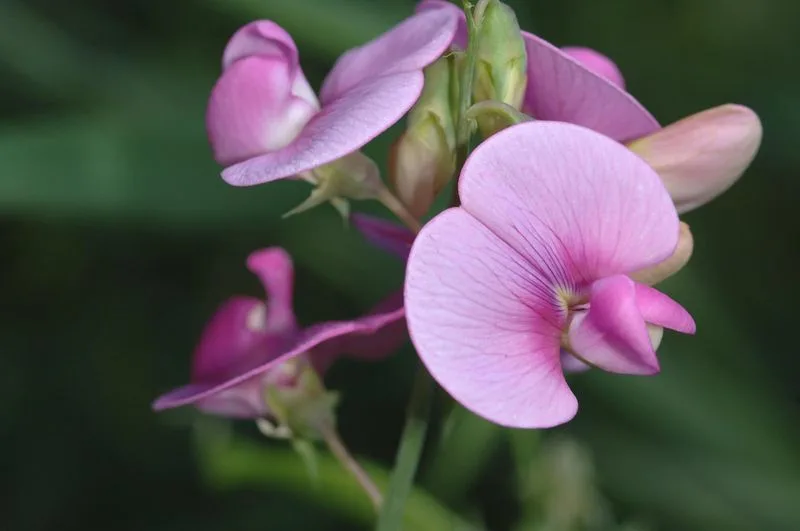
Sweet peas are renowned for their enchanting fragrance and delicate blooms, emerging 70 to 90 days from planting. Often grown for their scent, they make wonderful additions to cut flower arrangements. These climbing plants prefer cooler temperatures and thrive in well-drained soil and full to partial sun. Supporting them with a trellis enhances their growth and display. Regular harvesting of flowers encourages more blooms, allowing you to enjoy their beauty and aroma throughout the season.
Impatiens
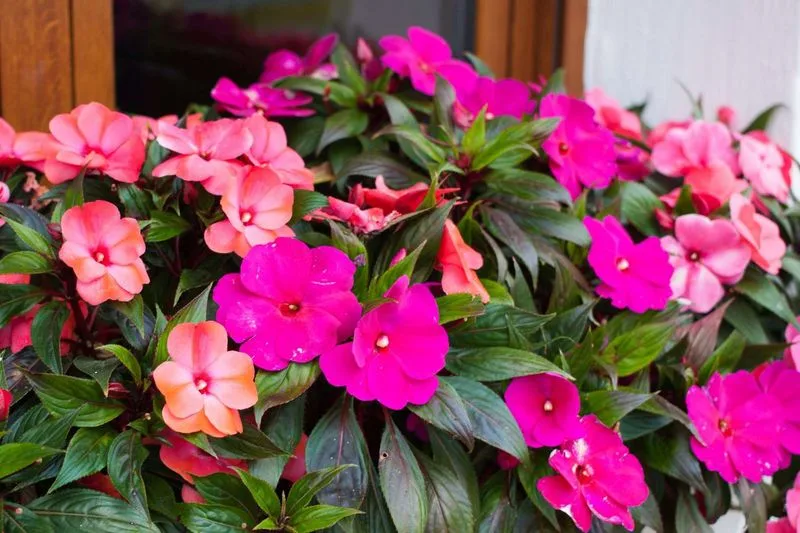
Impatiens are beloved for their ability to brighten up shady spots with vibrant colors, blooming about 60 to 70 days after seeding. These flowers thrive in partial to full shade and require well-drained, moist soil. They’re perfect for adding color to areas where other flowers might struggle. Their compact growth makes them ideal for borders, containers, and hanging baskets. Regular watering and occasional feeding keep them flourishing, rewarding gardeners with continuous blooms.
Black-eyed Susan

Black-eyed Susans are a staple in wildflower gardens, known for their striking yellow petals and dark centers. Blooming 70 to 90 days from seed, they are valued for their hardiness and adaptability. These flowers thrive in full sun and can tolerate a range of soil conditions. Their cheerful appearance and ease of care make them ideal for informal garden settings. Black-eyed Susans can attract pollinators, contributing to a healthy ecosystem. Regular deadheading promotes prolonged blooming.
Columbine

Columbines are known for their unique, spurred blossoms and typically bloom 70 to 90 days after seeding. These perennial flowers add an element of whimsy to gardens, thriving in partial shade and well-drained soil. Columbines are versatile, performing well in both rock gardens and woodland settings. Their intricate flowers attract hummingbirds and other pollinators, enhancing the garden’s biodiversity. While relatively low-maintenance, removing spent blooms encourages further flowering.
Nasturtium
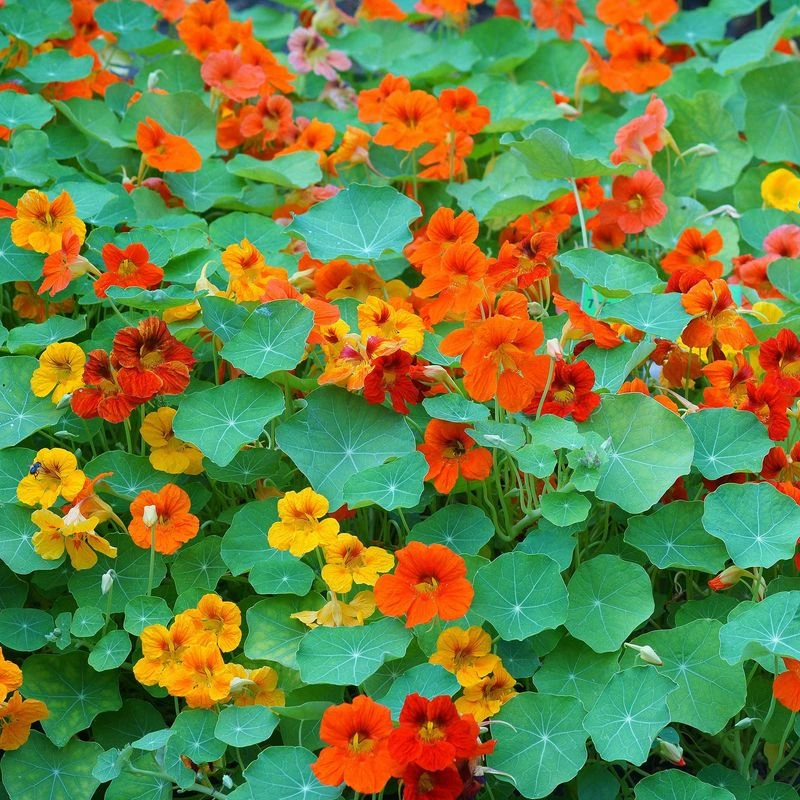
Nasturtiums bring a splash of color and a hint of spice to gardens, blooming 60 to 70 days from seed. These flowers are not only beautiful but also edible, adding pizzazz to salads. Nasturtiums are highly adaptable, thriving in poor soil conditions and full sun. Their trailing habit makes them perfect for containers, hanging baskets, or as ground cover. To encourage more flowers, avoid over-fertilizing. Enjoy both their visual appeal and culinary versatility in your garden space.
Calendula
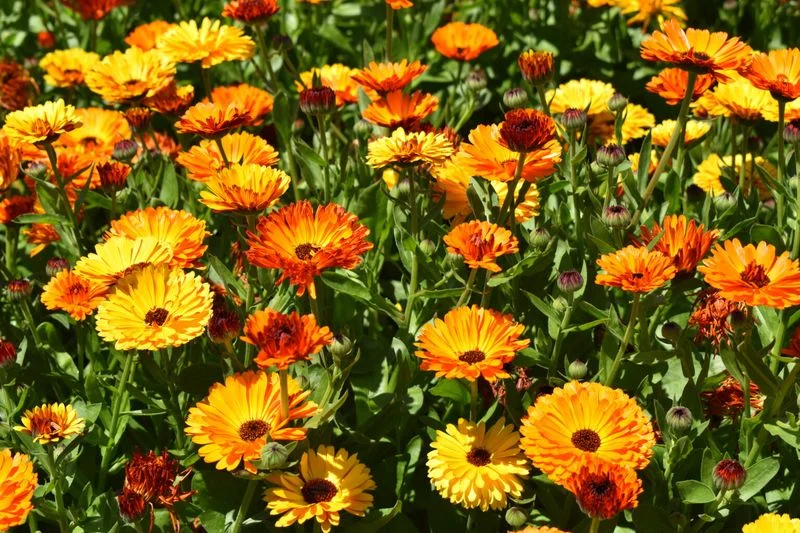
Calendula, often called pot marigold, is celebrated for its medicinal properties and vibrant flowers, blooming 45 to 60 days from seed. These hardy plants are easy to grow and thrive in sunny locations with well-drained soil. Calendula’s petals are edible and can be used in salads or as natural dye. Their bright blooms attract pollinators, enriching the garden’s ecosystem. Regular deadheading results in a more extended flowering period, making calendula a valuable addition to both flower and herb gardens.
Alyssum
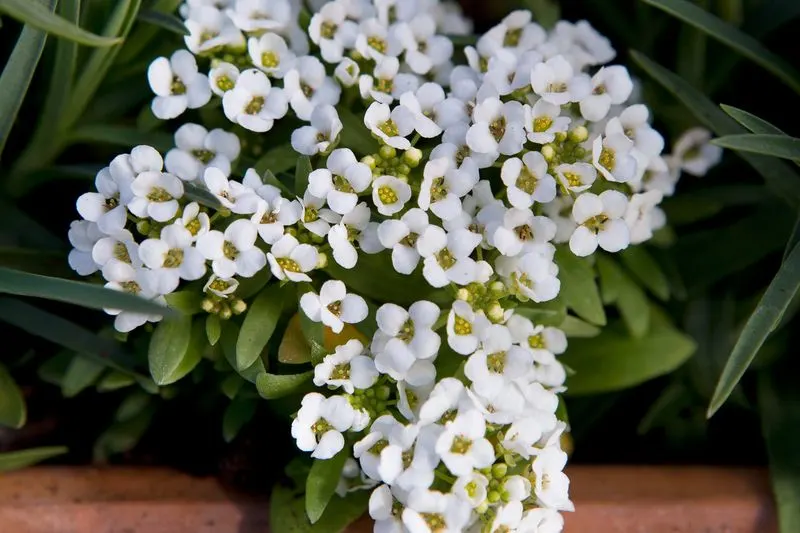
Alyssum adds a delicate, fragrant touch to gardens, with tiny flowers that appear 60 to 70 days after sowing. These low-growing plants are perfect for borders, rock gardens, or as ground cover. Alyssum thrives in full sun to partial shade and requires well-drained soil. Their sweet scent is a natural attractant for pollinators, contributing to a vibrant garden environment. To maintain their compact shape and encourage reblooming, regular trimming is beneficial. Alyssum’s subtle beauty can enhance various garden styles.

